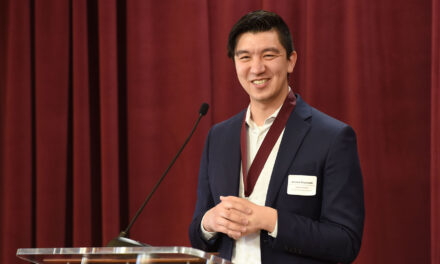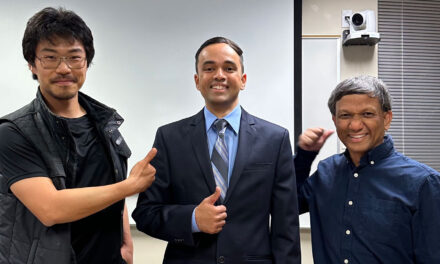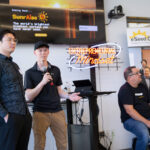
Charging up an electrified future
ASU researcher Houqiang Fu will use his NSF CAREER award to explore ultrawide bandgap semiconductor aluminum nitride for power electronics

In the face of climate change, the growing necessity to transition from traditional fossil fuels to using electricity as civilization’s primary source of energy demands an upgrade in the capabilities of power electronics. Power electronics are semiconductor devices that regulate the flow of electricity to make it usable for consumer and industrial applications.
While the need for power electronics to regulate electrical flow is increasing, the primary semiconductor material used in them, silicon, has problems keeping up.
“With the skyrocketing consumption of electricity, traditional silicon devices are approaching their material limits and cannot keep up with increasing demand for higher efficiency, frequency, power density and resiliency,” says Houqiang Fu, an assistant professor of electrical engineering in the Ira A. Fulton Schools of Engineering at Arizona State University. “Nearly 10% of all electricity in the U.S. is lost during conversion through silicon power devices, which is more than the electricity produced by all renewable energy sources combined.”
To handle the need for enhanced power electronics, new materials known as ultrawide bandgap semiconductors are under investigation by researchers in the field. Fu received a 2024 National Science Foundation Faculty Early Career Development Program (CAREER) Award to explore the potential for one such material, aluminum nitride.
Closing the gap on electric efficiency
Through his research on using aluminum nitride to enhance power electronics, Fu aims to develop power field-effect transistors that control power flow with greater efficiency and can handle higher temperatures and more voltage than those made with silicon. Field-effect transistors are used in power grid transmission technology to convert electricity to a usable form for power company customers.
Compared to silicon, aluminum nitride has smaller energy losses and can handle higher temperatures and voltage. Aluminum nitride is also expected to perform better in power electronics than wide bandgap semiconductor materials such as silicon carbide and gallium nitride.
“The new aluminum nitride power electronics can offer superior performance and significantly impact grid modernization, transportation electrification and greenhouse gas emissions,” Fu says. “The electronics will also dramatically increase the current grid infrastructure’s resilience, reliability and efficiency. They will also help mitigate power disruptions’ health and economic impact and improve energy security.”
He says that due to the material’s ability to better conduct electricity, aluminum nitride can eventually lead to lower electricity costs for consumers and accelerate grid integration of renewable energy sources such as solar and wind power.
Beyond applications in the power grid, the new aluminum nitride devices can increase the number of miles electric vehicles can drive on a single charge. With 53% of consumers surveyed by the American Automobile Association citing worries about range as a primary concern discouraging them from adopting electric vehicles, Fu expects that improving range will improve uptake among consumers.
Developing a blueprint for future power electronics
Currently, while aluminum nitride has promising properties, a lack of knowledge of how to effectively use the material for power electronics prohibits it from reaching its full capabilities.
To better understand how to build power electronics using aluminum nitride, Fu will lead a five-year investigation to determine how best to overcome the main problems facing the use of the material. The research, much of which will take place in the semiconductor-focused portions of ASU Core Research Facilities, will focus on how best to grow the crystals needed for manufacturing aluminum nitride, refine it, fabricate it into power electronic devices and integrate the devices into electrical systems.
While Fu will serve as the sole faculty member involved in the project, he will have two doctoral students assisting him, as well as master’s degree and undergraduate students through programs such as ASU’s Master’s Opportunity for Research in Engineering, or MORE, the TSMC AZ Fellowship and Fulton Undergraduate Research Initiative, or FURI.
“For those who are interested in a career in the microelectronics industry, this research area can equip them with interdisciplinary skills that are highly sought after in the semiconductor field, such as nanofabrication, material characterization, semiconductor device physics, material growth and more,” Fu says.
For Fu, the CAREER Award represents a culmination of years of his work in the power semiconductors and electronics field.
“This project is strongly motivated by my passion for my career as a researcher and educator in the semiconductor field,” Fu says. “I hope the work we are doing inspires and attracts more researchers and students to study this new generation of wide and ultrawide bandgap semiconductors and build amazing devices that better our society.”


































